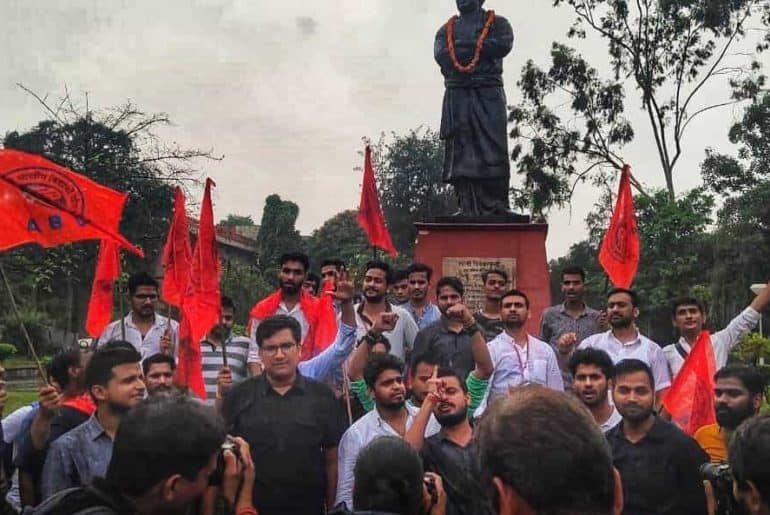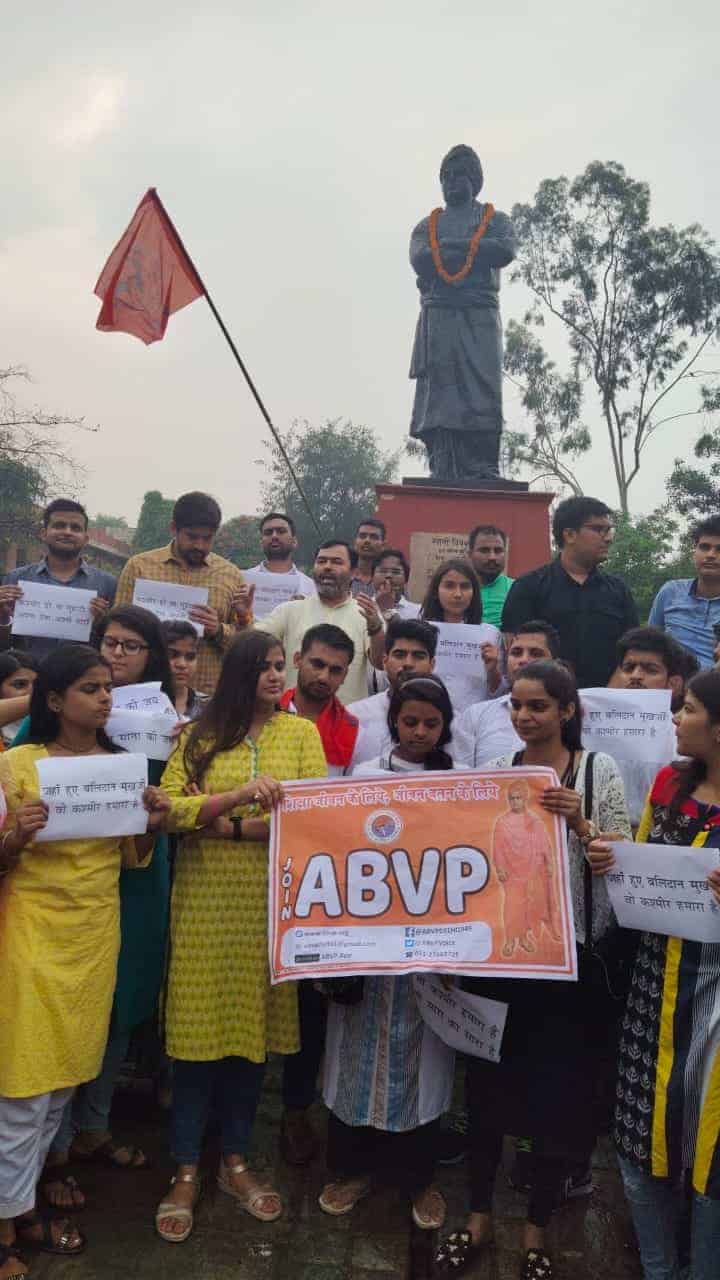The festival of Durga Puja is not just a celebration of the homecoming of the goddess but also a cultural bonhomie, celebrating art of all sorts. Read on for more.
Durga Puja or as we bengalis fondly call it pujo, is probably the greatest celebration of art Calcutta sees on an annual basis. There might be special art drives in the Lake area where people end up drawing twelve feet long alponas (the bengali version of rangoli but done with ground rice paste traditionally) and bizarrely absurd, politically provocative graffitis on walls along the Jadavpur campus and other upcoming up-market cafe areas. There is also the latest mandatory tourist spot – the Old Currency Building, now turned into a three floor specially curated celebration of the Bengal School of Art – from colonial times to independent India. But none of these sporadic clusters exemplify the community euphoria in viewing and consuming art the way pujo does.
It is a cultural whirlpool. Turn a corner and you will see an entire alley, otherwise dingily darkened – now turned bright and dreamy with a canopy of yellow fairy lights hanging overhead. A few more turns and you will see a variation of the same display of luminosity in terms of a street where the lights are now multi-coloured and are strung together vertically, on either side of the road. As you make your way through, it is not just a simple lane you are walking through any more. It is like walking into the dreamscape of your unposted letters of love, now strung together in the form of a million glistening light orbs. But the magicality of the moment I described – nowhere near the actual experience because pujo as a festival can only be felt – is exemplified further in areas with the bigger pandals and celebrations where the canopy is no longer just strings of light bound together. But an entire canopy put together in glorious designs and colours. You are no longer in a street you have traversed all year round. It is a tunnel of a fantasy land from another world, which self activates every year briefly and disappears – only to appear bigger and brighter the next year.
Who is the sculptor of this figure? Did this club change their usual guy? Is Sanantan Dinda doing Naktala this year or did Chetla Agrani buy him out? Why did they have to distort the face thus? Doesn’t she look too angry in this one?
A cacophony of voices asking the same questions together. Having spent so many years in the city and vehemently holding my ground before parents who would have much preferred to go on a holiday – far removed from the nauseating sweat and crowd infestations of the festival – I like many others have become quite familiar with the varied sculptural styles we see our idols built in. Kumortuli or the Potter’s Colony is the stuff of absolute photo stories across the world.
But the potters or sculptors as I prefer calling them, who spend their many years under makeshift shacks in the midst of floodwater and mud, have their own distinctive styles and contributions to the evolution of the festival as a whole. The traditional yellow face of the goddess with long draw, darkly lined eyes is still to be seen in many places, but in the larger discourse of the creation of idols, it has give way to the more humanist thickly eyelash-ed faces of the Rudra Pal brothers – who now are at the receiving end of commissions from the biggest clubs in the city.
Thousands of people flock every year to see these idols, which although unchanged in their style have served to give vision to the popular imagination of what the goddess looks like. Their figures are adorned in the traditional golden foil called the daaker shaaj or the ornament that came by post (the foil used to be imported from Germany at one point) or the pristine white of the sholaar shaaj or the ornamentation made from thermocol. Art historians will never consider this but the potters of Calcutta are the true holders of the legacy of Ravi Varma, the first Indian to give face to our gods. But even beyond these traditional portrayals there are daring artists like Bhashkar Sur and Sanatan Dinda, all exemplary modern artists in their own right who come up with visualisations of the goddess figure in accordance with the theme of the club they are hired by that year.
Which brings me to the next big thing about pujo in my city – the theme. Much before people even start their shopping for the festival, posters and advertisements proudly announcing the themes for each individual club go around the city. People sitting huddled in autos are found discussing-
Did you hear Chetla Agrani is going to be doing something based on Kalidasa? But I really liked what Bosepukur did last year- though I am not sure if I completely understood it – did you? I do not know about the rest but I am most definitely going to go to Sreebhumi first – haven’t you heard they are doing Burj Khalifa this year?
I have been to galleries and seen art installations and then I have attended Durga Pujo in my city. If cities could be works of art then the thousand and more pujos spread across the length and breadth of the city are the many brush strokes and colour splashes on its expanding canvas. I have seen, within two months or sometimes three, artists and workers make an entire temple structure out of steel utensils. Award winning clubs which have conjured simply out of nowhere temple structures out of – wait for it- knit grass blades. But this is not just a celebration of empty art. This art is deeply political too. Many high concept pujos find people crowding the exit area poring over long standees explaining the concept of the theme and the decoration people just saw. For there are clubs standing in solidarity with the farmer’s protest – with massive installations of feet joined together and the blisters resembling melting faces of the heroes we will never know. Some turn an entire lane into a brothel with extra figures of women waiting for customers and finally leading upto the room of the brothel madame who sits there protecting them all – envisioned in the form of the goddess. But sometimes in the hands of a different artist, she takes the shape of a migrant woman – carrying her four children sitting on the back of a truck, her third eye glaring at you in the face.
During Durga Pujo, my city is an open art gallery with its people turning from one lane to another partaking in and bringing to life the glorious art on display.
Anwesh Banerjee
[email protected]



